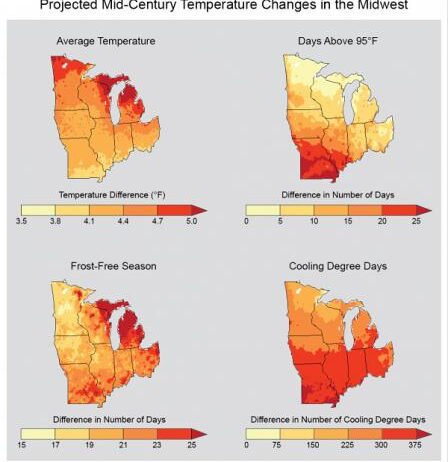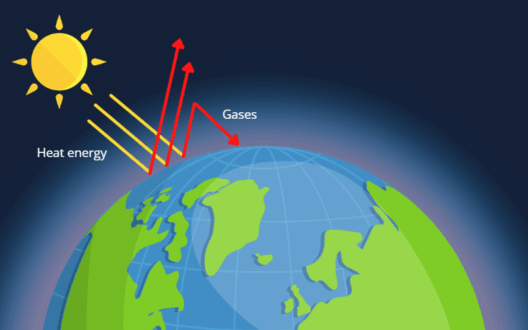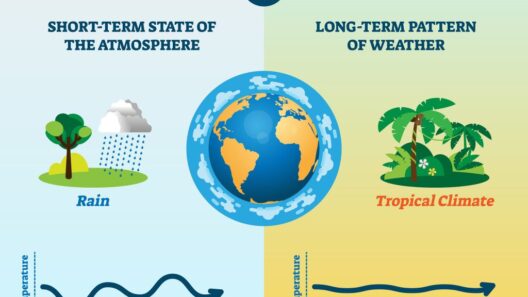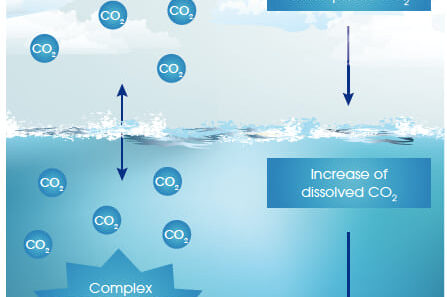What does the climate in the Midwest truly signify? This region, often viewed as the heartland of America, presents a fascinating tableau of natural wonder characterized by four distinct seasons, each contributing to its agricultural richness, ecosystem diversity, and cultural tapestry. Yet, with all its beauty and charm, the Midwest faces the climate crisis, urging us to ponder: how might climate change alter this quintessential American landscape in the future?
The Midwest is defined by its geographical diversity, stretching from the Great Plains to the rugged terrain of the Appalachians. This expanse creates a temperate climate, influenced by both continental air masses and maritime weather patterns, resulting in a bewitching amalgamation of conditions. But what encapsulates the essence of Midwestern climate is its four seasons, each presenting a unique experience and challenges to its inhabitants.
Starting with spring, the season awakens the land from the slumber of winter. As the frost melts away, temperatures gradually rise, usually ranging from the forties to the sixties Fahrenheit. Nature comes alive; flora embellishes the landscape with vibrant colors, while fauna reemerges. Cherry blossoms, lilacs, and tulips add a kaleidoscopic charm to cities and countrysides alike. Farmers begin tilling the soil, marking the onset of the agriculture cycle, a cornerstone of Midwestern culture. However, spring can also be fickle, bringing unpredictable weather patterns, including violent thunderstorms and tornadoes. These phenomena pose a significant challenge to local populations who must navigate the precarious balance between embracing new life and managing severe weather risks.
As spring transitions to summer, the Midwestern climate shifts into a sultry embrace. With temperatures sometimes exceeding the nineties, the season is characterized by long, sun-drenched days. Cornfields sway in the warm breeze, and lakes become gathering spots for families seeking respite from the heat. Summer presents opportunities for outdoor activities such as hiking, fishing, and attending state fairs, renowned for their corn dog stalls and handmade crafts. Yet, the warmth is not without its drawbacks. The region can experience oppressive humidity, leading to discomfort and health concerns, particularly for vulnerable populations. As we consider the season’s charm, we must also remain vigilant towards the effects of rising temperatures, which may exacerbate heatwaves and affect agricultural yields in the years to come.
With the arrival of autumn, the Midwest showcases its finest artistry. The foliage transforms into a stunning panorama of reds, oranges, and yellows, drawing tourists and locals alike into state parks and scenic byways. The temperature begins to cool, usually settling in the fifties and sixties, making it a perfect time for harvest festivals and pumpkin patches. Autumn holds great significance for agriculture, symbolizing the culmination of a year’s labor. Yet, just as the charming visuals enthrall us, the onset of harsher weather patterns looms on the horizon. The potential for early frosts and extreme rainfall events poses existential challenges for local farmers, threatening crop viability and food security through unknown climatic changes.
As winter descends, the Midwest is blanketed in snow, transforming the landscape into a picturesque winter wonderland. The stark beauty of frozen lakes and frosted trees captivates the imagination and fosters a sense of serenity. Temperatures often plunge to the teens and below, prompting unique recreational pursuits such as ice fishing, skiing, and snowmobiling. However, winter also brings its own set of complications, including blizzards and frigid winds, making travel hazardous and life challenging. Moreover, the effects of winter on infrastructure can be problematic, as freezing temperatures can lead to significant wear and tear on roads and buildings. Acknowledging these challenges is essential as climate change continues to impact seasonal temperatures and snowfall patterns.
As we navigate the complexities of the Midwest’s climate, it is paramount to recognize how each season not only enchants but also presents unique challenges. The interplay between natural beauty and human vulnerability sparks a dialogue about adaptability and resilience. What will happen when seasonal norms begin to dissolve? How will communities respond to the shifting realities of their environment? The urgency is palpable, and the answers are not easily discernible.
Moreover, climate patterns are shifting, with projections suggesting warmer winters, erratic summer storms, and fluctuations in precipitation—transforming the Midwest landscape and lifestyle permanently. Agricultural sectors may need to innovate to contend with changing conditions, prompting a reevaluation of crop viability and farming methods. Meanwhile, communities must prepare to enhance flood defenses and invest in sustainable infrastructure to uphold safety and ensure environmental integrity.
Ultimately, the Midwest encapsulates a unique intersection of climate diversity and cultural vibrancy. Enthralling as its seasons may be, they serve as a reminder of the stringent realities intertwined with charming landscapes. From the joy of blossom to the tranquil beauty of snowfall, each season invites us to appreciate its gifts while simultaneously confronting the ecological challenges ahead. In a rapidly changing world, it is imperative that we cherish and protect the Midwestern climate, paving the way for generations to discover both its challenges and its enduring charm.







